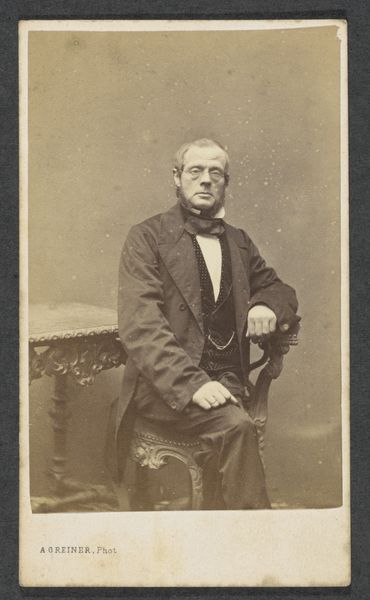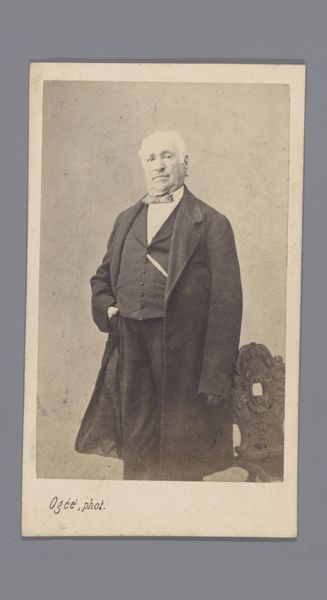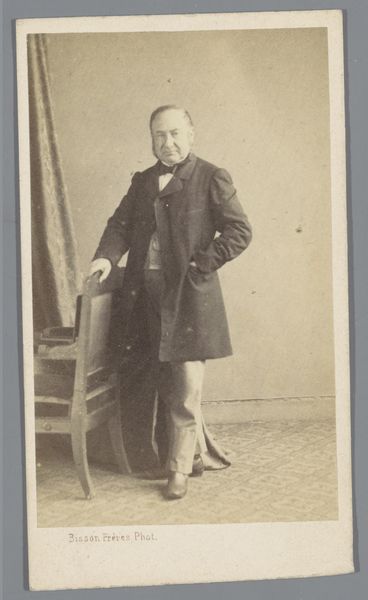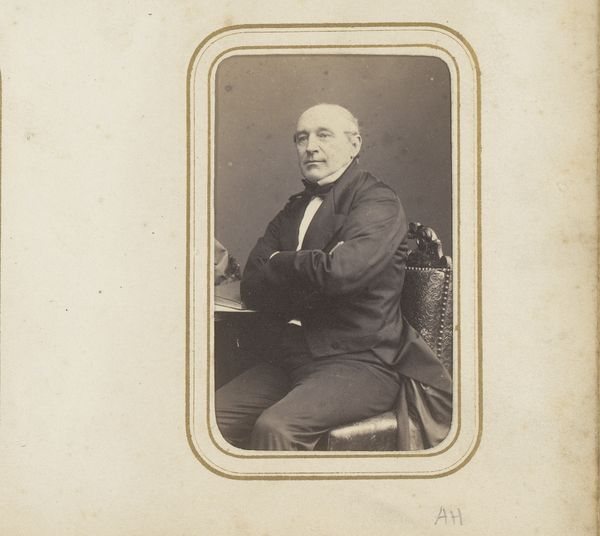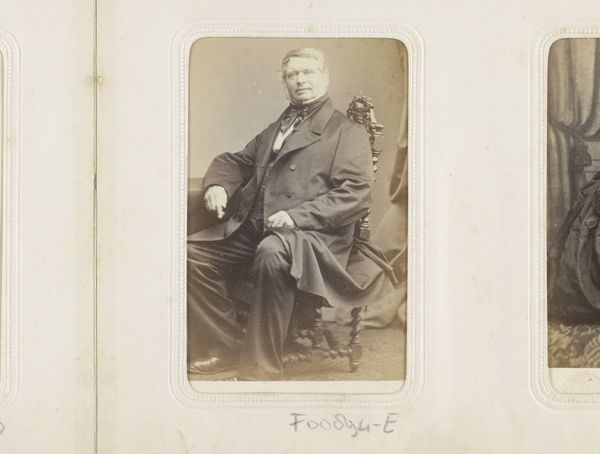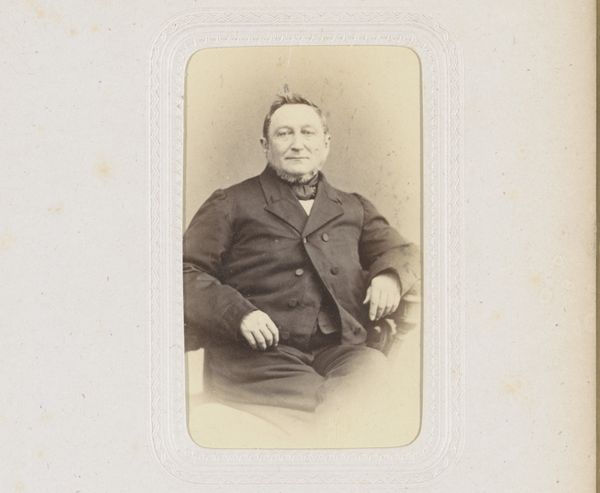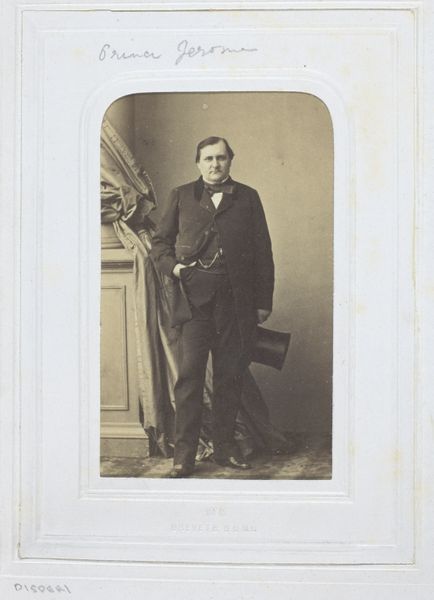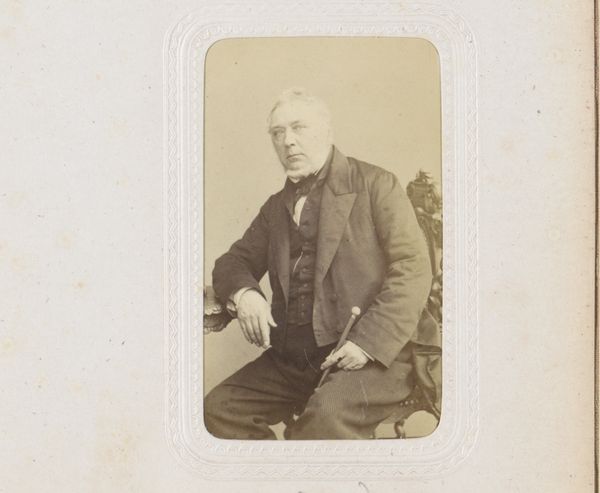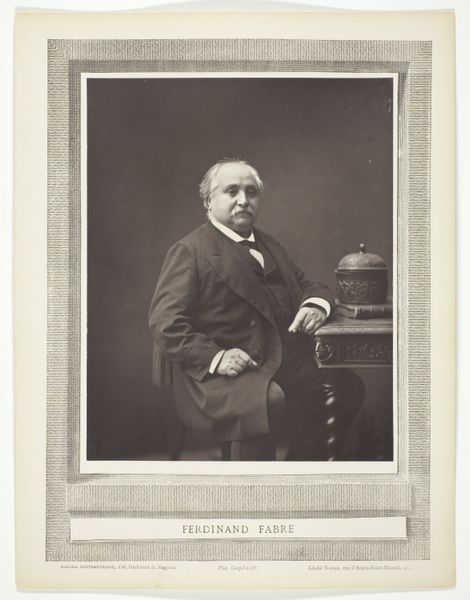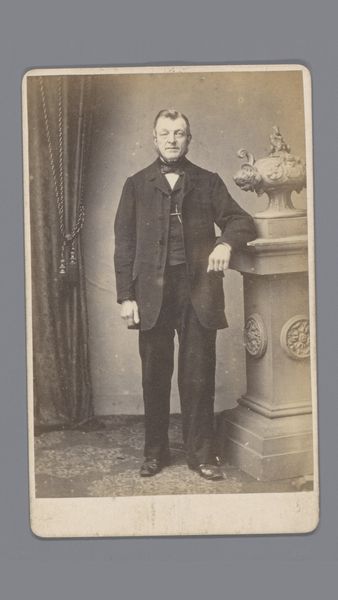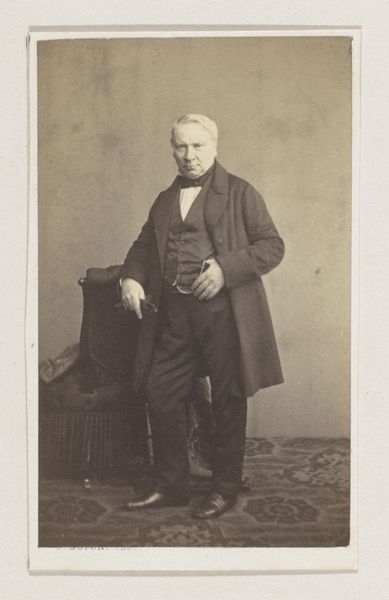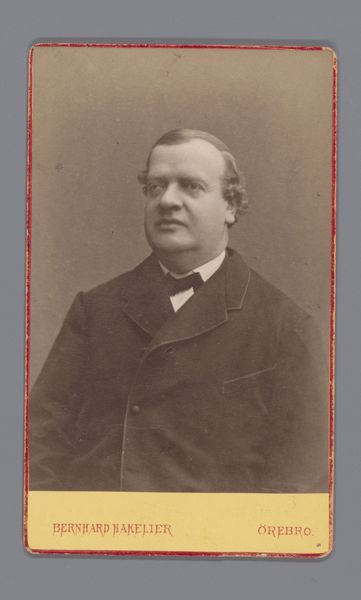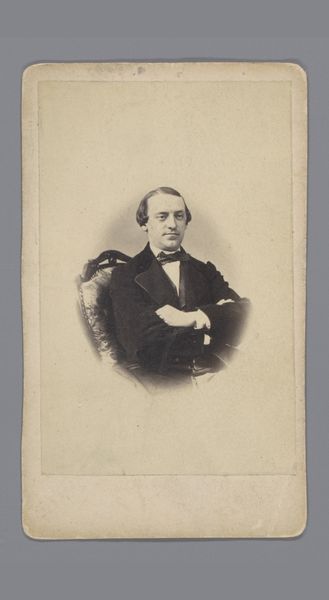
photography, gelatin-silver-print
#
portrait
#
photography
#
gelatin-silver-print
#
paper medium
#
realism
Dimensions: height 105 mm, width 62 mm
Copyright: Rijks Museum: Open Domain
Curator: Wegner & Mottu, a photographic studio, captured this intriguing "Portret van de heer Nije" between 1857 and 1864, employing the gelatin silver print method. I'm immediately drawn to the rigid composure of the sitter; there is an unmistakable air of solemnity about him. Editor: The tight, almost symmetrical composition contributes to that solemn feel, doesn't it? It also emphasizes his social standing – that intricately carved chair screams privilege, and the sitter's direct gaze, while seemingly stern, asserts control. It also makes me wonder about the absence of women. This studio clearly served a particular societal stratum, where men like Mr. Nije held prominence. Curator: That is an important point. His pose with the folded paper in his left hand speaks volumes about his literacy, his access to information. I'm curious about the subtle symbols, the conscious decisions behind this composition. Notice how he holds that paper. Editor: Precisely! It is no accident. What narrative are we creating about wealth and class by presenting imagery that reproduces social values, as opposed to resisting them? And thinking about it being captured by a studio, not a singular photographer, raises questions of mass reproduction. What's lost, what's amplified, through this seemingly neutral process? Curator: Perhaps what's amplified is a shared understanding of ideal male representation within that particular societal moment. The dark coat, the precise tie... a symbol for wealth, or, for being part of this society. A standardization of sorts in those upper classes, but yet still claiming individuality through minor details of that standardized "uniform." Editor: It also speaks to the role photography played then—as a nascent technology shaping identity and solidifying power structures. Images, then and now, participate in creating realities. This portrait is no neutral record; it actively manufactures and disseminates a very specific representation of a man like Mr. Nije. Curator: Well, analyzing this gelatin silver print helps us to perceive how such visual systems and ideas take hold in history and even how some persist across the decades to this very day. Editor: Absolutely. Reflecting on photography in the context of historical, cultural forces—helps me see not only the beauty of technique but the ways photography both documents and drives ideological work.
Comments
No comments
Be the first to comment and join the conversation on the ultimate creative platform.
